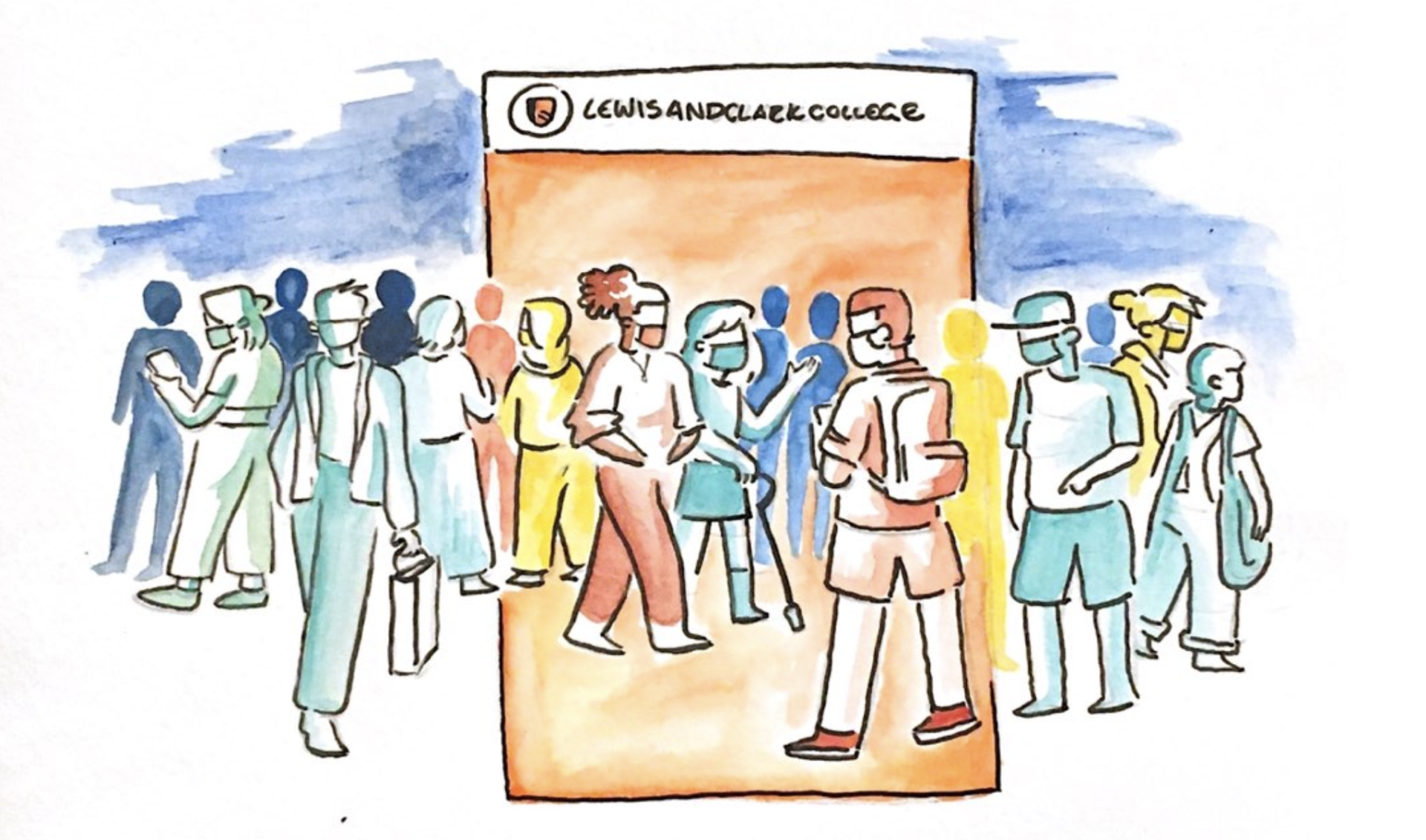
Disproportional representation in publicity materials has led some BIPOC students to question whether they are being tokenized: chosen to represent the school only as symbols of efforts to diversify Lewis & Clark.
Mark Figueroa, dean of equity and inclusion and associate vice president for institutional research and planning, noted that this is not an issue isolated to LC.
According to Figueroa, a number of institutions utilize what is referred to as a “standard diversity picture.” This often consists of students who represent a variety of different ethnicities or have physical limitations.
He admits that the issue is challenging.
“How do you balance wanting to let students who may not think of this institution as being diverse or welcoming to see a version or representations of themselves while, at the same time, not trying to overrepresent who we are as a college?” Figueroa said. “I have had some students in the past who have come to me and said ‘you know, the pictures that I see don’t look like what our student body looks like.’”
Figueroa’s sentiment was echoed by Robin Homes-Sullivan, vice president for student life and dean of students.
“I know that for underrepresented groups when there’s been traditionally or historically a lack of access or affordability or representation, if you don’t necessarily feel as though you were represented … or welcomed, then it might lead a person to think that that’s not the place for them,” Holmes-Sullivan said.
According to Holmes-Sullivan, representation is not only valued, but is also imperative, “so that individuals who have traditionally been underrepresented feel and experience the fact that they are welcomed and included.”
This issue of statistical underrepresentation remains a looming problem for institutions across the country. The Lewis & Clark Common Data Set, an annual online report published by the Office of Institutional Research, displays the representative rates of minority groups at LC. According to the most recent report from October 2020, Black or African American students were one of the most underrepresented student groups. Of the 1,814 degree-seeking students at the College of Arts and Sciences, only 45 identified as Black or African American. Proportional to U.S. Census Bureau data on race, that number should have been over 220.
Breanna Leal ’24, community outreach leader of Gente Latina Unida, said a discussion on tokenism is important to have at LC.
According to Leal, it is expected that LC would want to promote diversity within the student body, particularly due to the large number of BIPOC students within the class of 2025.
“(But) if you look around, it’s still very much white,” Leal said.
Many students of color have voiced incidents where they were sought out to be photographed in ways their non-BIPOC counterparts were not, likely for promotional material published by LC. In that way, predominantly white institutions may benefit from the images of BIPOC students.
Erin Fails ’25 recalled being approached by a photographer eager to have Fails and her friend, also a woman of color, pose for a picture. Fails was preparing to oblige the photographer’s request when the friend she was with declined.
“I realized my friend said no because she knows that that picture is going to be used to show how diverse LC is, even though we were some of the only students of color in that space,” Fails said.
According to Figueroa, LC has undertaken recent efforts, such as the five-year partnership with the Posse Foundation, in order to increase the population of underrepresented students on campus. This large-scale advance in diversity will bring approximately 50 students from diverse backgrounds to LC.
“Our African American student population is relatively low given that we’re on the West Coast and there’s a strong representation of African Americans in California — not so much in Oregon or Washington,” Figueroa said. “So our engagement within the Metro D.C. area with Posse was a reason two-fold: one because we have a pretty significant alumni base in Washington, D.C., but also because we know there is a large population of African American students there.”
For Fails, a Posse scholar, being part of the advancement of diversification at LC is exciting but feels like tokenism in its own right.
“I can’t speak to the normal experience of a student of color just trying to live their life, because my life has already sort of been dedicated to basically just being a token,” Fails said.
Despite feeling additional pressure because of her scholarship, Fails said the issue of tokenism is not limited to students of color who are part of specific programs.
“I think feeling the pressures of being a token is something that a lot of students of color can definitely resonate with,” Fails said. “So … if they didn’t sign up for it then they shouldn’t have to experience it.”
Additional reporting by Asmaa Zaidan.
Subscribe to the Mossy Log Newsletter
Stay up to date with the goings-on at Lewis & Clark! Get the top stories or your favorite section delivered to your inbox whenever we release a new issue.

Leave a Reply